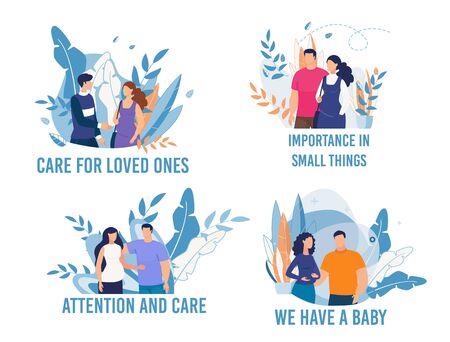Understanding the Impact of Divorce on Children
Divorce is a significant life event that can deeply affect children, especially in the United States where family dynamics and expectations may vary widely. When parents separate, kids often experience a range of emotional, psychological, and behavioral changes as they try to adapt to new routines and relationships. Many children feel sadness, confusion, anger, or even guilt, believing they might be responsible for their parents’ split. Others may act out at home or school, become withdrawn, or struggle with academic performance. Anxiety about the future and loyalty conflicts between parents are also common. Recognizing these signs early is crucial; persistent mood swings, changes in sleeping or eating habits, declining grades, or social withdrawal can all indicate that a child is struggling to cope. By understanding these impacts, families and caregivers can better identify when a child might need extra support—sometimes beyond what a loving home can provide. Therapy can play an important role in helping children navigate these complex emotions and build resilience during this challenging time.
2. How Therapy Supports Coping and Adjustment
When children experience their parents divorce, they often feel overwhelmed by changes at home, school, and within their social circles. Therapy plays a critical role in guiding them through these challenges, offering practical tools for navigating new family dynamics. Therapists create a safe environment where kids can express their emotions—whether thats anger, sadness, confusion, or even guilt—without fear of judgment. This emotional outlet is essential for helping children process the changes happening around them and validate that their feelings are normal.
In addition to emotional support, therapy equips children with strategies to manage stress and anxiety that commonly arise during parental separation. Techniques such as mindfulness exercises, journaling, or role-playing scenarios help children learn how to calm themselves when feeling upset or uncertain. Therapists may also teach problem-solving skills and coping mechanisms tailored to each childs unique situation. For example, younger kids might use art or play therapy to communicate their thoughts, while older children could benefit from cognitive-behavioral approaches that address negative thinking patterns.
| Therapeutic Tool | Purpose | Example Activity |
|---|---|---|
| Emotion Identification | Helps children recognize and name their feelings | Feelings chart or emotion cards |
| Stress Management | Teaches relaxation and coping strategies | Breathing exercises, guided imagery |
| Resilience Building | Fosters adaptability and confidence in facing change | Role-play difficult scenarios, positive self-talk exercises |
By working with a therapist, children not only gain tools for immediate relief but also develop resilience that benefits them long-term. Building resilience means helping kids see that while change is hard, it can also lead to growth and new strengths. Ultimately, therapy helps children adjust to life after divorce by supporting healthy communication, nurturing self-esteem, and reinforcing a sense of stability during uncertain times.

3. Types of Therapy Approaches for Children
When it comes to helping children navigate the emotional challenges of divorce, therapists in the United States often rely on several well-established approaches. Play therapy is a popular choice for younger children who may struggle to express their feelings verbally. Through games, art, and imaginative activities, therapists can help kids communicate complex emotions in a safe, supportive environment. Play therapy encourages self-expression and helps children process their experiences at their own pace.
Cognitive-behavioral therapy (CBT) is another widely used method, especially for older children and adolescents. CBT helps kids identify negative thoughts and develop healthier coping strategies. By working through real-life scenarios and practicing new skills, children learn to manage anxiety, anger, or sadness related to their parents’ separation. This approach empowers them to reframe their perspective and build resilience during a difficult time.
Family counseling is also an important therapeutic tool in the U.S., particularly when it comes to addressing communication breakdowns within the family unit. Family sessions provide a safe space for parents and children to voice concerns, set boundaries, and develop new ways of interacting post-divorce. This collaborative process fosters understanding and helps rebuild trust among all members, making transitions smoother and less stressful for everyone involved.
Each of these therapeutic interventions offers unique benefits, and many therapists will tailor their approach based on a child’s age, personality, and specific needs. By utilizing play therapy, cognitive-behavioral therapy, or family counseling—or a combination of these—mental health professionals give children the tools they need to cope with divorce in healthy, constructive ways.
4. The Role of Parents and Caregivers in the Therapeutic Process
Parental and caregiver involvement is a crucial factor in the success of therapy for children coping with divorce. When parents and caregivers actively participate in the therapeutic process, children are more likely to feel supported, understood, and safe. Collaboration between parents and therapists helps ensure that the strategies developed in therapy are reinforced at home, creating a consistent environment that fosters emotional healing.
Benefits of Parental Involvement
| Benefit | Description |
|---|---|
| Consistency | Therapeutic tools and approaches used by therapists can be continued at home, helping children apply coping skills daily. |
| Emotional Support | Children feel reassured when their parents validate their feelings and show understanding during difficult times. |
| Progress Monitoring | Parents can observe changes in their childs behavior and provide feedback to therapists, enhancing the treatment plan. |
Ways Parents Can Collaborate with Therapists
- Open Communication: Maintaining honest dialogue with therapists about concerns, goals, and observations.
- Attending Sessions: Participating in family or joint sessions when recommended by the therapist.
- Implementing Strategies: Practicing coping techniques and communication skills at home as suggested by the therapist.
The Importance of a Supportive Home Environment
A nurturing home environment is essential for children navigating divorce. This includes providing structure, clear expectations, and opportunities for children to express their emotions. Parents should avoid negative talk about the other parent in front of the child and instead model healthy conflict resolution. By working closely with therapists, parents can create a united approach that prioritizes their childs well-being.
Conclusion
The collaboration between parents, caregivers, and therapists is vital in helping children adjust to life changes after divorce. When families work together with mental health professionals, children receive the guidance and reassurance they need to thrive during challenging transitions.
5. Finding the Right Therapist in the U.S.
Finding a qualified therapist for your child is a critical step in supporting their emotional well-being during a divorce. In the United States, parents have access to a wide variety of mental health professionals, but selecting the right fit can feel overwhelming. Here are some actionable tips to guide you through this important process.
Understand Therapist Credentials
Start by looking for therapists who are licensed in your state and specialize in working with children and families. Common credentials include Licensed Clinical Social Worker (LCSW), Licensed Marriage and Family Therapist (LMFT), Licensed Professional Counselor (LPC), or Psychologist (Ph.D. or Psy.D.). You can verify their licenses through your state’s licensing board. Additionally, many therapists pursue specialized training in child psychology or play therapy, which can be particularly helpful for younger kids.
Consider Cultural and Regional Fit
The United States is culturally diverse, and it’s important to find a therapist who understands your family’s unique background and values. Seek out professionals who are sensitive to your culture, language, and beliefs. Some parents may prefer therapists who offer services in languages other than English or have experience working with specific communities. Consider whether you’d like someone familiar with local resources and school systems, as they can better support your child within your region’s context.
Tips for Parents: Where to Start
- Ask for Recommendations: Speak with your child’s pediatrician, school counselor, or friends who have gone through similar experiences. They often have reliable referrals.
- Check Professional Associations: Organizations like the American Psychological Association (APA) and the American Association for Marriage and Family Therapy (AAMFT) offer searchable directories of licensed professionals.
- Interview Potential Therapists: Don’t hesitate to schedule initial consultations. Ask about their experience with divorce-related issues, approach to working with children, and how they involve parents in the process.
- Evaluate Comfort Level: It’s important that both you and your child feel comfortable with the therapist. Trust your instincts—if it doesn’t feel like a good match, keep looking.
Insurance and Accessibility
Finally, consider practical factors such as insurance coverage, office location, availability of telehealth sessions, and fees. Many therapists work with insurance plans or offer sliding scale fees based on income. Prioritizing accessibility ensures that therapy remains consistent and sustainable for your family.
A Thoughtful Choice Makes a Difference
Selecting the right therapist isn’t just about qualifications; it’s about finding someone who connects with your child and respects your family’s needs. With careful research and an open mind, you can find a supportive professional to help your child navigate the challenges of divorce.
6. Building Long-Term Resilience After Divorce
Therapy can be a powerful starting point for children coping with divorce, but building lasting resilience requires ongoing effort and support from both parents and the community. As children transition out of regular therapy sessions, several strategies and lifestyle changes can help maintain their emotional well-being and encourage them to thrive long-term.
Encouraging Open Communication
Creating an environment where kids feel safe expressing their emotions is crucial. Parents should regularly check in with their children, validating their feelings and letting them know it’s okay to talk about tough subjects. Using age-appropriate language and showing empathy can make a significant difference in how children process changes within the family.
Maintaining Consistent Routines
Stability is especially important after a major life change like divorce. Keeping consistent daily routines — such as regular meal times, homework schedules, and bedtime rituals — provides a sense of security that helps children adapt more confidently to new family dynamics.
Promoting Healthy Coping Skills
Encourage children to use the coping skills they learned in therapy, such as deep breathing, journaling, or talking to a trusted adult when they’re feeling overwhelmed. Parents can also model healthy ways to manage stress, demonstrating that everyone experiences difficult emotions and there are constructive ways to handle them.
Fostering Social Connections
Strong friendships and supportive relationships outside the immediate family are vital for resilience. Encourage your child to participate in extracurricular activities, sports teams, or clubs where they can build confidence and develop a sense of belonging.
Seeking Ongoing Support When Needed
Even after therapy ends, it’s normal for children to have ups and downs. Remind them that seeking help is always an option if they start feeling overwhelmed again. Some families find it helpful to check in with a therapist periodically or join support groups for divorced families in their area.
By focusing on these strategies and supporting children as they grow, parents can help lay the groundwork for long-term mental and emotional health. The goal isn’t just to help kids cope in the moment but to empower them with the resilience they’ll need throughout their lives.


